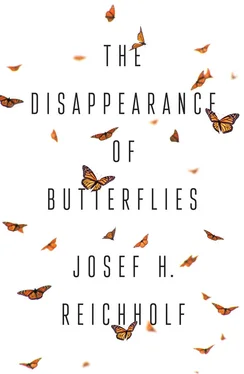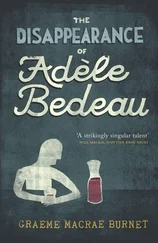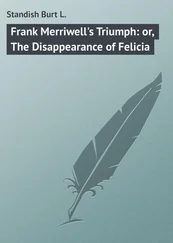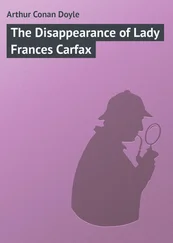I have always struggled to get close enough to this jewel of a butterfly to attempt a photograph: whenever I looked through the viewfinder of the camera and had the impression that I was close enough, had chosen the right section of the view and found the proper angle to capture the heavenly sheen, it would disappear with a barely perceptible wingbeat. Annoyed, and also ashamed of my slowness, I would later ascertain that on many such supposed butterfly pictures there would be nothing but the bare surface of the forestry track. Anyone who wants to take good photographs of such flighty beauties will need a lot of patience. Even then, it will barely suffice if you are not familiar with the behaviour of the butterfly and have no idea how it is influenced by the prevailing air temperatures or by the interplay of light and shadow in the forest. Early morning is the best time for photographs, when the sun is quite high and the butterflies are still numb from the cool and damp of the night. That said, at that time of day our purple emperors are usually still sitting in the unreachable heights of the treetops. Sometimes, one is simply lucky, and a photo comes out well. At other times, there might be special circumstances, such as those I once came across on a perfectly ordinary summer day in early July.
That morning, my wife and I were taking the dog for a walk in the forest. It was still cool enough for him under the trees. As usual, he walked a couple of metres ahead of us and sniffed his way carefully along the edges of the forestry track. When a few large butterflies flew up into the air, disturbed by the tip of his snout, he stopped short and sniffed the spot, but it appeared to hold nothing of great interest for his nose. He turned instead to trees where other dogs were accustomed to leaving their scent marks. We had not yet moved far from the parking area by the edge of the forest, and were therefore in the zone in which dogs that are taken to the woods mark most thoroughly. I would not have paid any further attention if the butterflies had not immediately flown back to the same place. Only then did it occur to me that our dog must have poked them directly with his nose. That was certainly highly unusual, since the group consisted of different butterfly species, namely two red admirals, a large purple emperor and two lesser purple emperors – that is, butterflies that were usually especially elusive. At 25°C in the shade, it was definitely warm enough for them, but what struck me was the peculiar flight pattern of these butterflies. Barely had they been roused than they settled down again on the same spot with their wings closed, that is, brought together vertically, so that when seen from above they looked like nothing more than five straight lines. Photographing lines is not particularly interesting, even when the lines are actually butterflies. But recording the camouflage effect of the folded wings piqued my scientific interest. When else does one get such an opportunity, and, what is more, with three different species?
I also photographed a side view of the butterflies, so that they would be more recognizable. The fact that I did not need to slither up to them commando-style across the dusty forestry track, given that they were undisturbed by my approach, astonished me even more. One does not let such rare opportunities slip through one’s fingers. I photographed them from increasing proximity and hoped that they would do me the additional favour of opening their wings. But this they did not do, or at least, if they did, it was so instantaneous and so incomplete that I had no chance to capture the moment. Then, suddenly, one of them, a lesser purple emperor, put me in a most awkward situation. I must have got too close to it with my camera lens, wanting to see exactly how and where it was poking its unfurled proboscis. It flitted onto the camera and from there onto the back of my hand. There it sat and unfolded its wings so that they were perfectly flat, and their brightness shone right into my eyes.
For seconds I simply stared, enjoying this unparalleled view of the magnificent butterfly on my hand, and then, as slowly as I could, I took the camera with my left hand and gave it to my wife, so that she could capture this unbelievable moment. My movements did not upset the butterfly. Tangibly clinging onto my skin with its legs as I cautiously turned my hand, it allowed itself to be coaxed into a position that was more convenient for me and for the photo. Now it sat with outstretched wings right on the palm of my hand. With its lemon-yellow proboscis, it touched my fingers, a delicate but insistent contact that I distinctly felt. In the photograph, the antennae, proboscis and the position of the legs demonstrate that this butterfly is alive and has not been doped for an exhibition picture (see Photo 6). After several shots, which were difficult enough, since the camera had to capture the correct angle to make the emperor’s sheen visible, it fluttered away.
Then I noticed that a few paces away a large purple emperor was simply sitting in the middle of the forestry track. He, too, allowed himself to be photographed from just a few centimetres away, although with his wings folded up. The red admiral, which was also still there, did exactly what the lesser purple emperor had done: when I was almost close enough to touch it, it, too, flew onto my hand. Such behaviour is certainly not normal for butterflies. What caused it? My hands were neither sweaty nor dirty. Why did the purple emperor with the folded wings just sit there? I had never seen such a thing. The fact that some butterflies readily suck perspiration is interesting, but nothing special. My wife and I had experienced this repeatedly when bathing by unspoilt, flower-dense banks, where blues flew around in great numbers. One must simply remain still for long enough, for example in the semishade, and use no sunscreen, which would disturb the butterflies’ sense of smell. Occasionally we would make a game of it, allowing the blues to land on particular parts of the body. A fingertip dipped in perspiration, for example, would be suitable, or a big toe. Having made oneself attractive, one must approach the blue very slowly and with great care, so as not to frighten it away; it is a delightful game of patience on a hot and sultry summer’s afternoon.
It is also well known that some butterflies are attracted by fermenting tree sap. Butterfly collectors would make use of this in earlier times, with their own highly confidential recipes. These would almost always contain a little alcohol mixed with fruit, or overripe cheese, such as a Limburger or other potent cheese that would have smelled quite strong even to our noses. They would smear this onto promising sections of tree trunks or other exposed places, marking them just like dogs. Experienced collectors would confirm this, since they know that certain butterflies can actually be attracted to dog excrement or urine in clayey or sandy places. Lesser purple emperors in particular will swarm around dog excrement, but will usually fly away immediately if you approach. However, animal excrement, perspiration and alcohol could be excluded as causes of the strange behaviour of my five butterflies on the forestry track, as could overripe cheese. The cause was actually a carcass, as I then saw, and quite a flat one, about the size of a hand. I had seen butterflies feasting on dead animals before; most recently, a white admiral on a dead roe deer fawn that lay in the woods and was in a state of advanced decay. My attempt to photograph the butterfly that was feeding on it was ultimately successful, but required me to hold my breath, since the deer smelt so foul. Because the white admiral kept flying away, I had to advance several times before I managed to get close enough. Despite all this, it was not a striking picture, and I was forced (grudgingly) to admit it was little more than a useful record.
Читать дальше












